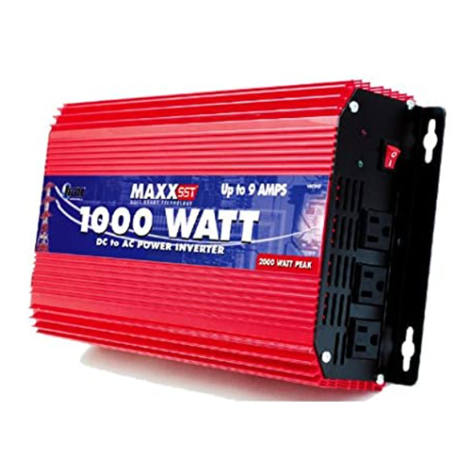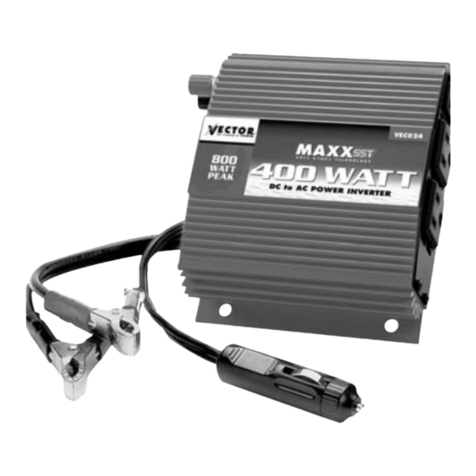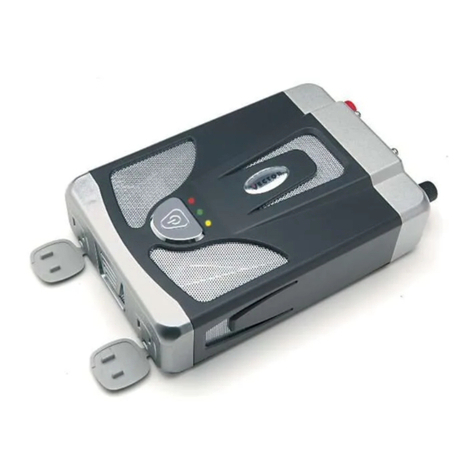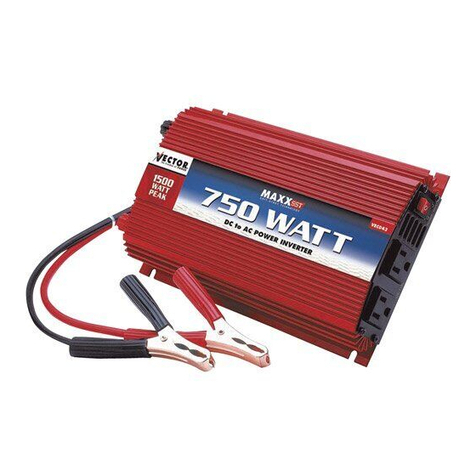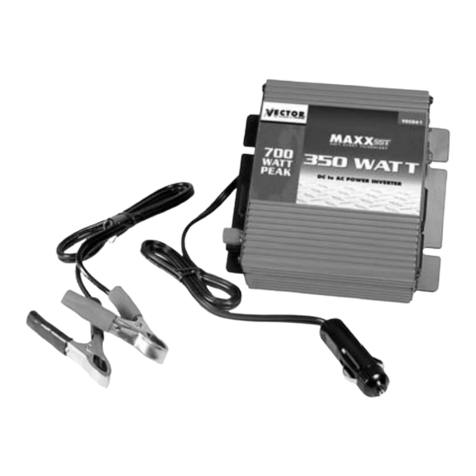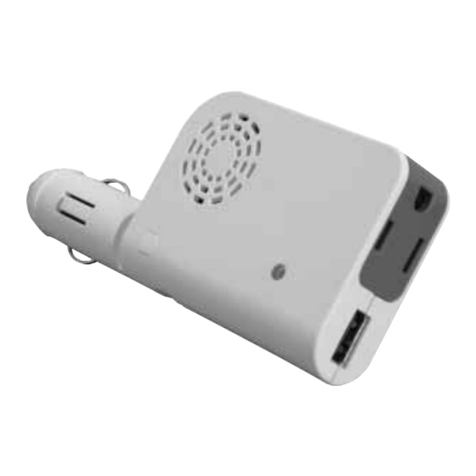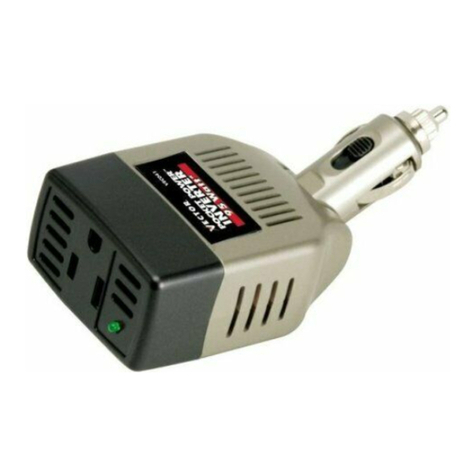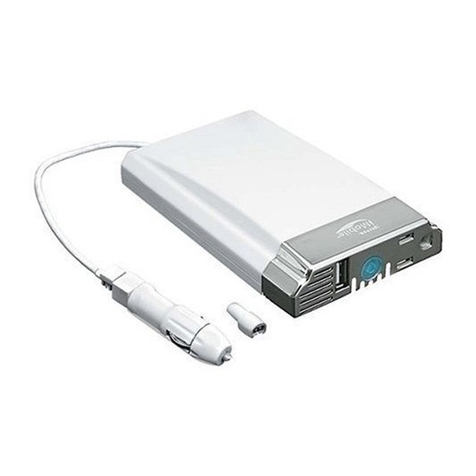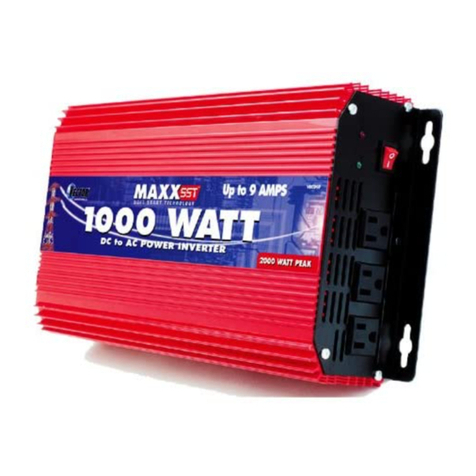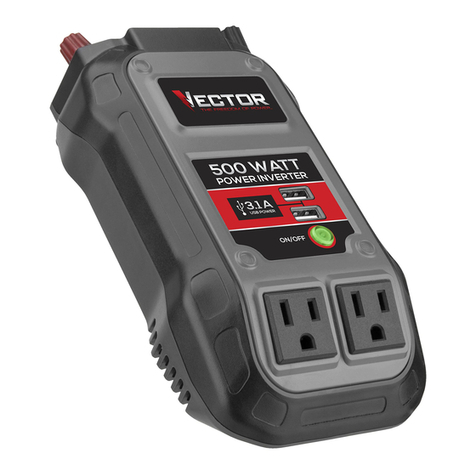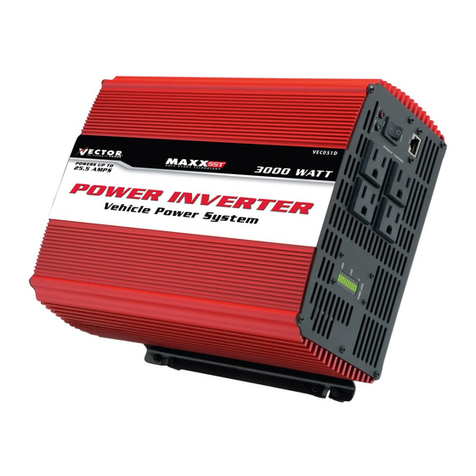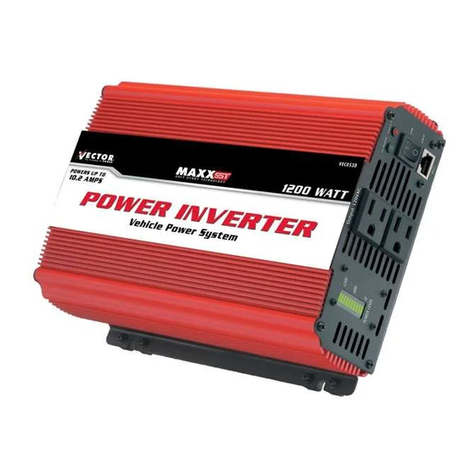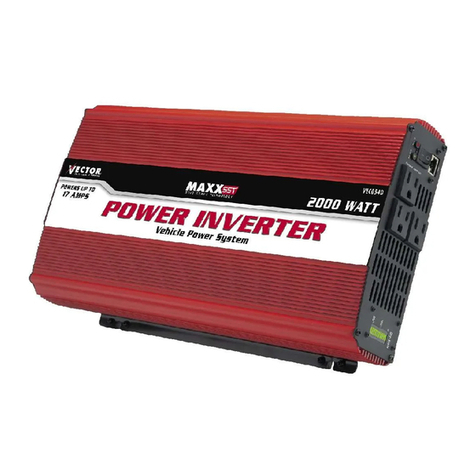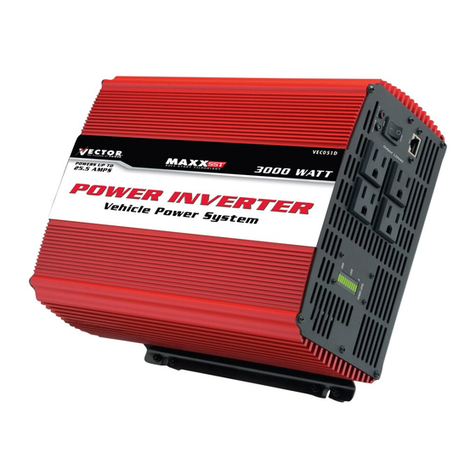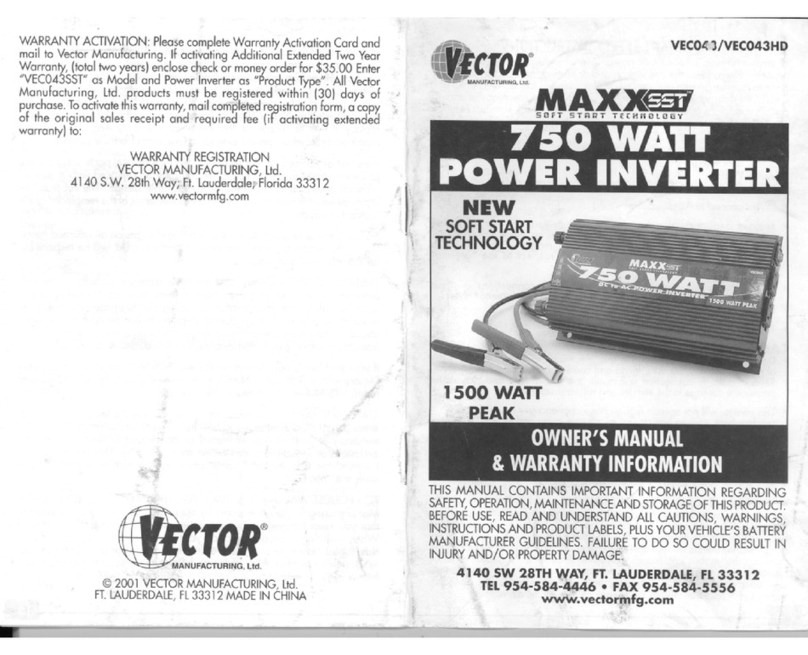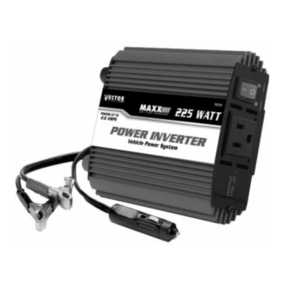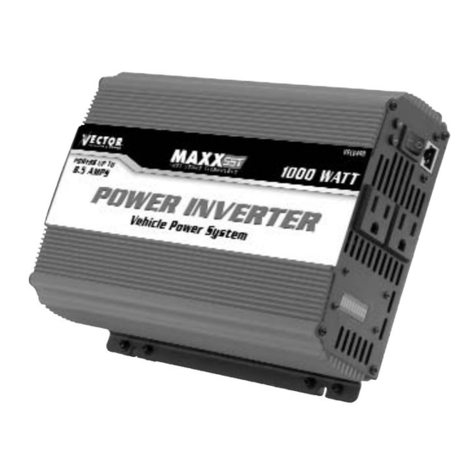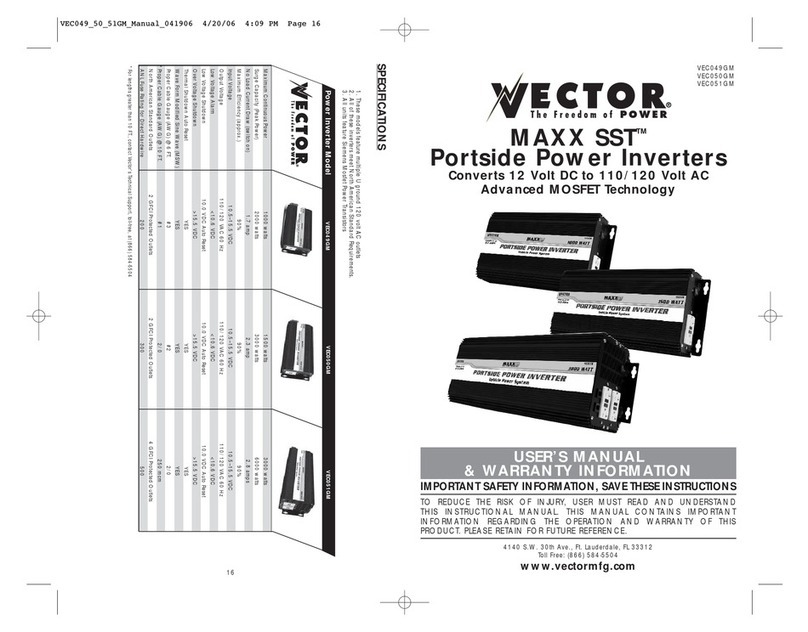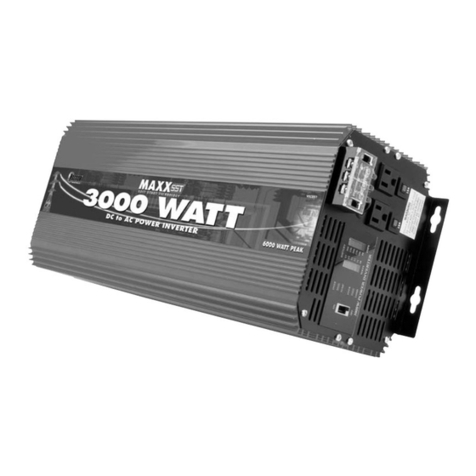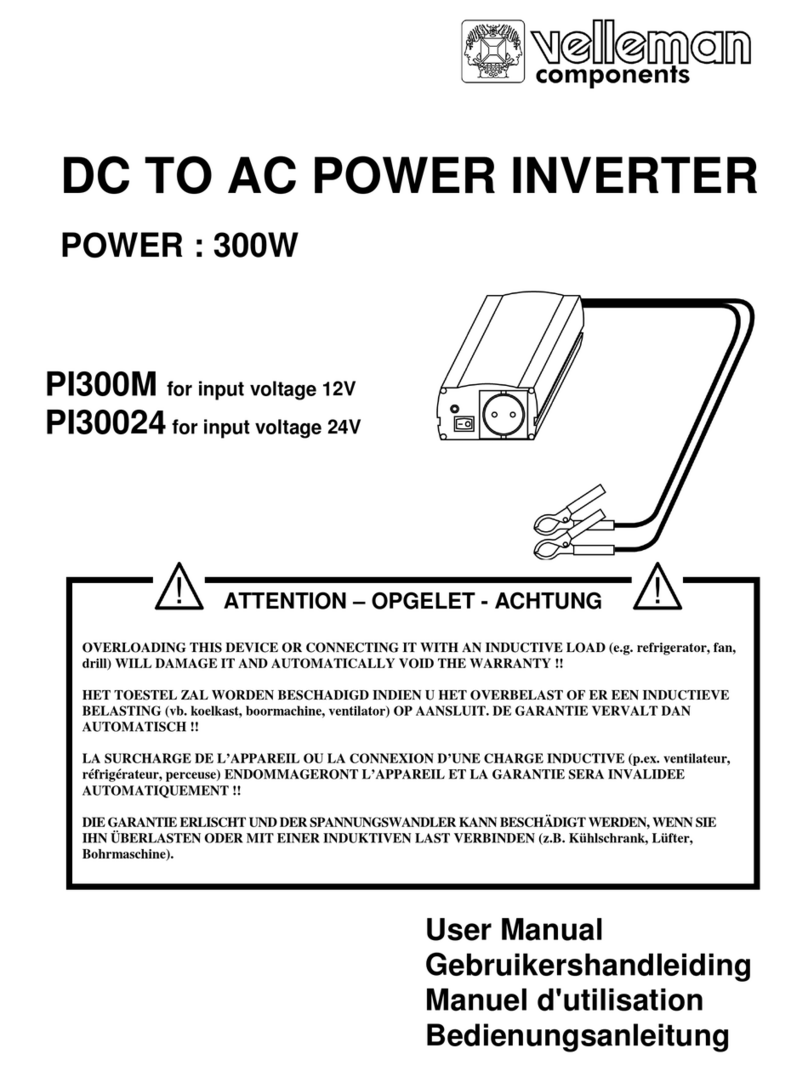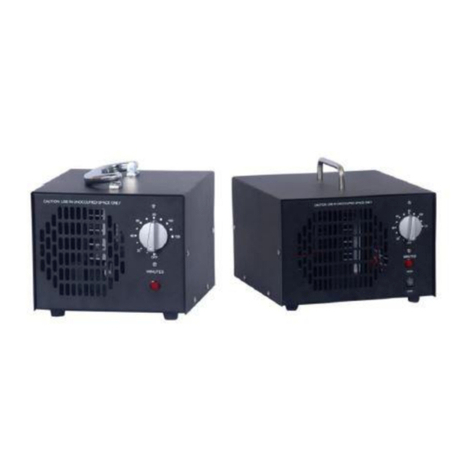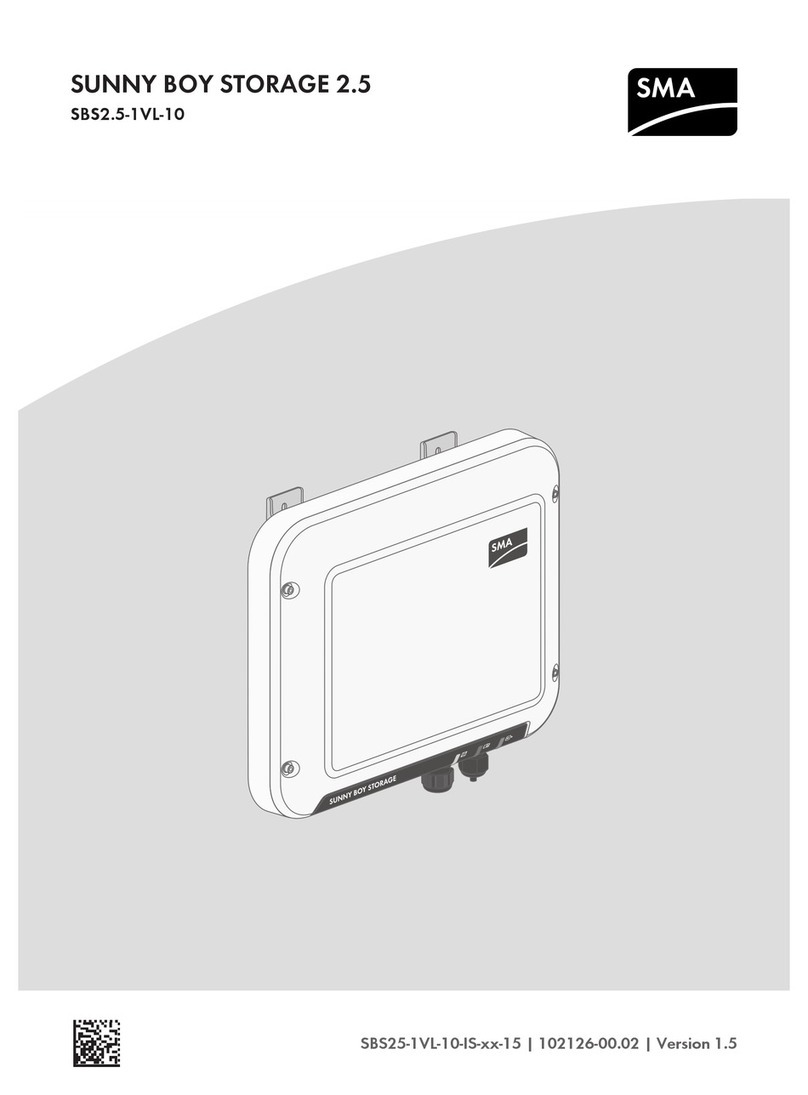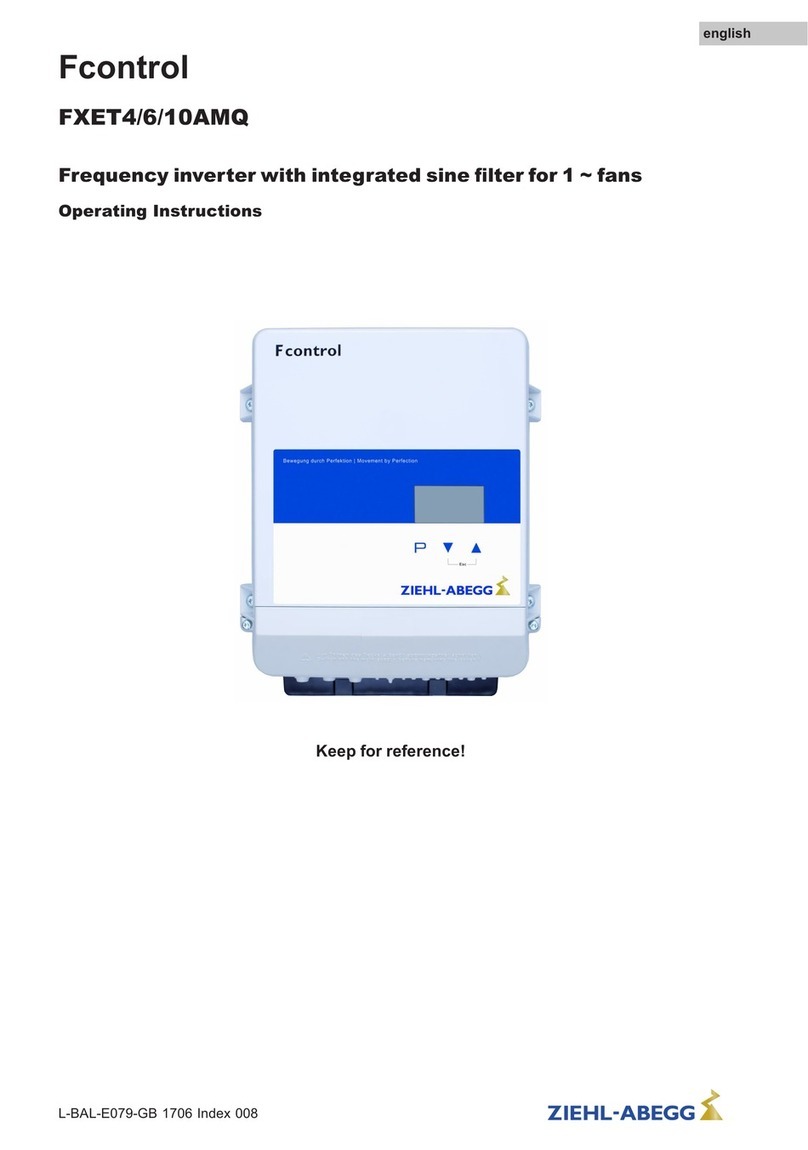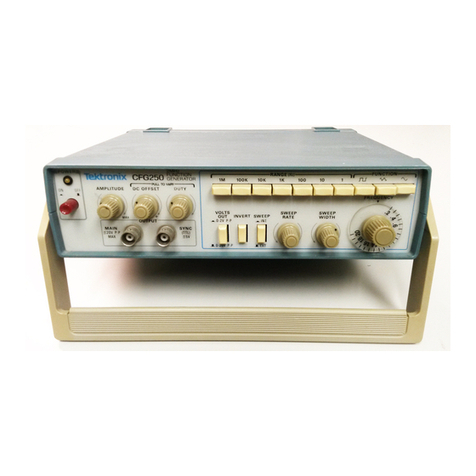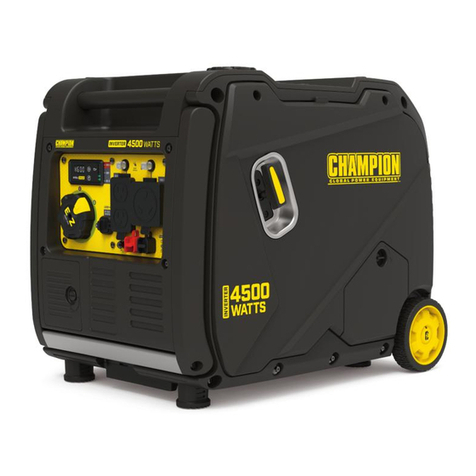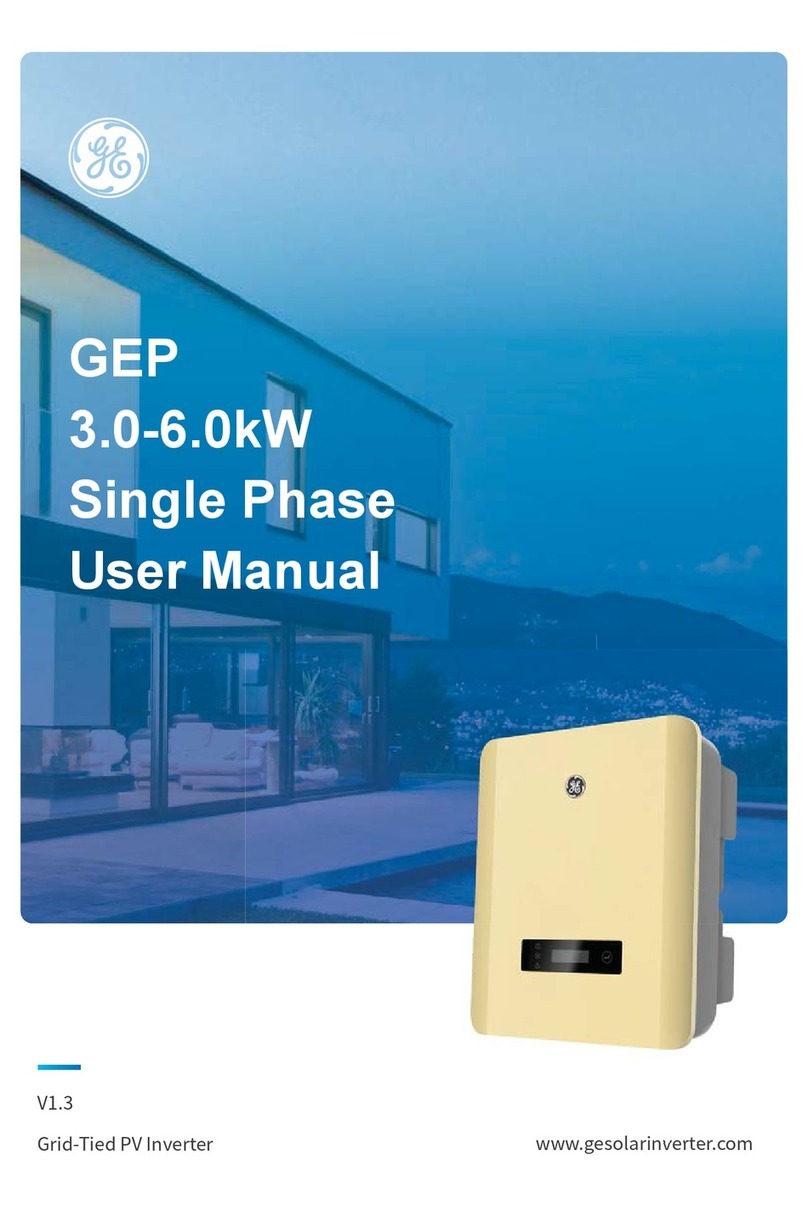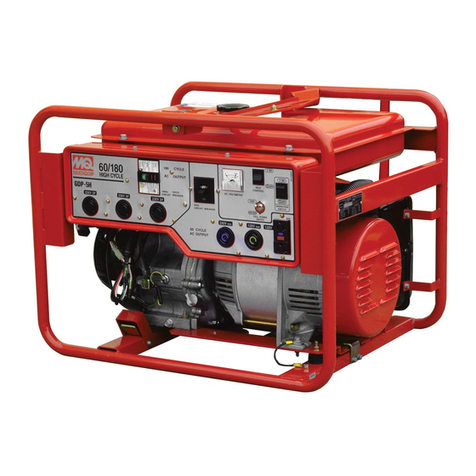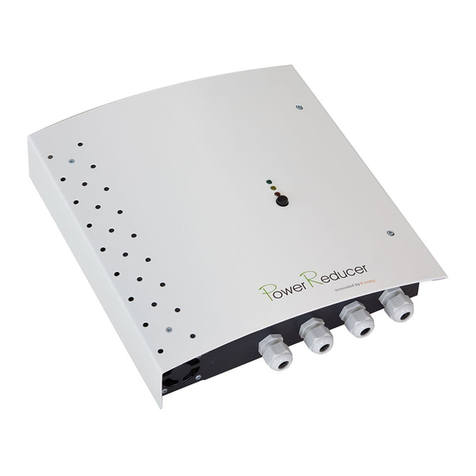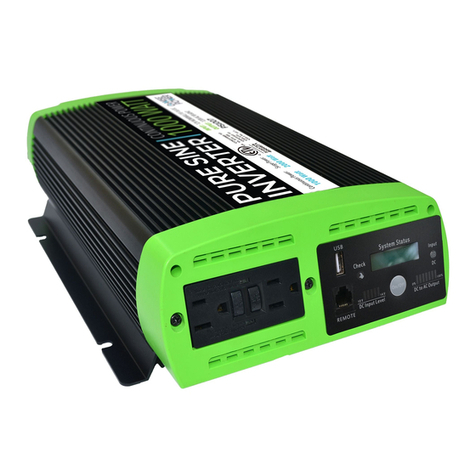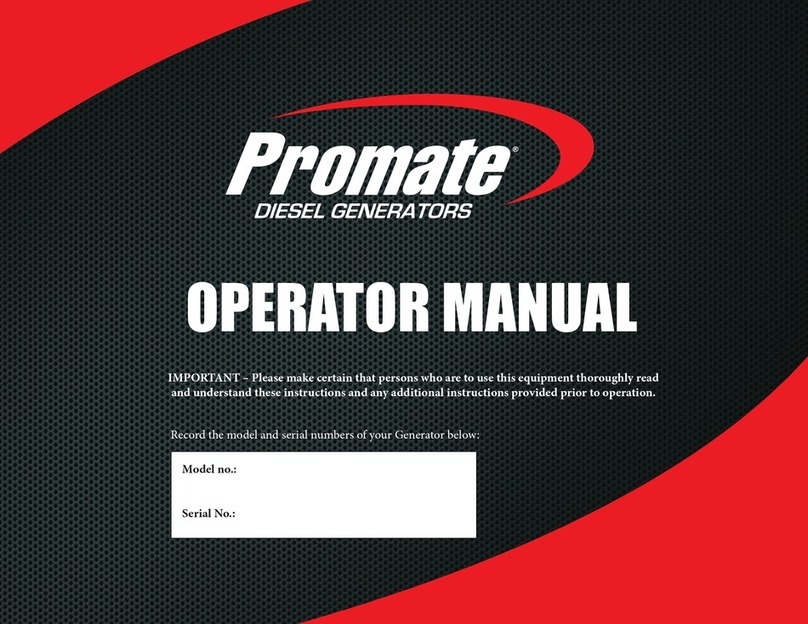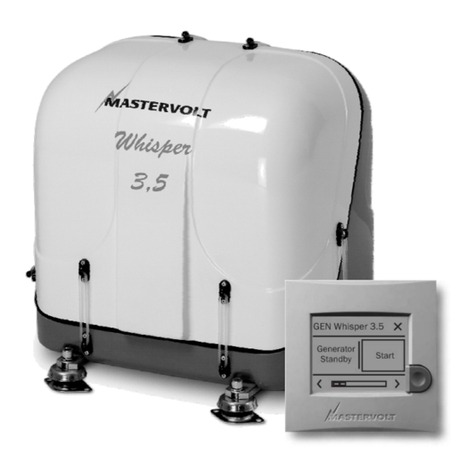SAFE –Donotusetheinverternearflammablematerialsorinanylocationsthatmayaccumulate
flammable fumes or gases. This is an electrical appliance that can briefly spark when electrical
connections are made or broken.
Rated Versus Actual Current Draw of Equipment. Most electrical tools, appliances,
electronicdevices and audio/visual equipmenthave labels thatindicate the powerconsumption in
ampsor watts.Be sure thatthe powerconsumption ofthe item tobe operatedis below100 watts.
Ifthe powerconsumption israted inamps, simplymultiply bythe ACvolts (110)to determinethe
wattage.
Resistiveloads arethe easiest for the inverterto run;however, it will notrun largerresistive loads
(suchas electric stovesand heaters) whichrequire far morewattage than theinverter can deliver.
Inductive loads (such as TVs and stereos) require more current to operate than do resistive loads
of the same wattage rating. For safety reasons, the unit will simply shut down if it is overloaded.
To restart the unit, simply remove the load and the unit will auto reset.
Note: This inverter will not operate appliances and equipment that generate heat, such as
hair dryers, electric blankets, microwave ovens, and toasters.
HOW THIS INVERTER WORKS
This inverter is an electronic device that converts low voltage DC (direct current) electricity from a
battery to 115 volt AC (alternating current) household power. In designing this inverter, the
manufacturer has incorporated design techniques previously employed in computer power
supplies. The result of these design innovations is a smaller, lighter and easier-to-use power
inverter.
Theinverterconverts powerintwo stages.Thefirst stage isaDC-to-DC conversionprocessthat raises
the low voltage DC at the inverter input to 145 volts DC. The second stage is a MOSFET bridge stage
that converts the high voltage DC into 115 volts, 60 Hz AC.
The DC-to-DC converter stage uses creative, high frequency, zero voltage switching power
conversion techniques that replace the bulky transformers found in less technologically advanced
models.The inverter stageuses advanced powerMOSFET transistors ina full bridgeconfiguration.
This ensures excellent overload capability and the ability to operate reactive loads like lamp
ballasts and small induction motors.
Inverter Output Waveform
The AC output waveform of this inverter is known as a modified sine wave. It is a stepped
waveform that has characteristics similar to the sine wave shape of utility power. This type of
waveform is suitable for most AC loads, including linear and switching power supplies used in
electronic equipment, transformers, and small motors.
The modified sine wave produced by this inverter has an RMS (root mean square) voltage of 115
volts,whichisthesameasstandardhouseholdpower.MostACvoltmeters(bothdigitalandanalog)
aresensitivetotheaveragevalueofthe waveform ratherthan theRMS value. Theyare calibrated
forRMSvoltageundertheassumptionthatthewaveformmeasuredwillbeapuresinewave.These
Itisalsoidealforusewith12voltDCcordless/portable/rechargeableDCpowersuppliesandjump-
starter products.
Estimated runtimes below are at 100 watt output:
• Jump-starters with 17-19 amp hour battery approx. 2 hours
• Compact jump-starter with 15 amp hour battery approx. 1.5 hours
• Compact jump-starter with 12 amp hour battery approx. 1 hour
Lower operating output (less than 100 watts) reduces the current drawn from the DC source, so
longer operating times can be realized.
OPERATION OF INVERTER
1. Insert the unit into the vehicle’s (or jump-starter’s) accessory outlet.
2. Rotate the plug slightly to make sure there is good contact.
3. A green LED light on the inverter will indicate a proper operation.
4. Ifthe inverterdoes not work,make surethe ignition/accessory switchis actuallypowering the
accessory outlet. Some vehicles need the ignition switch turned on.
5. Plug in the AC appliance.
PROTECTIVE FEATURES
The inverter monitors the following conditions:
Low Battery Voltage –
this condition is not harmful to the inverter but could damage the power
source,sotheinverter automatically shutsdownwheninputvoltage dropsto10.6volts.When this
condition is corrected, the unit will auto-reset.
OverVoltageProtection–
theinverterwillautomaticallyshutdownwhentheinputvoltageexceeds
15 volts DC.
Note: The inverter will auto-reset after removing a short circuit. If the inverter’s fuse fails,
disconnect the shorter load and replace the fuse inside the inverter. SEE FUSE REPLACEMENT – if
bad fuse is suspected.
OPERATING TIPS
The inverter should only be operated in locations that are:
DRY – Do not allow water or other liquids to come into contact with the inverter.
COOL –Surroundingairtemperature shouldbebetween-20°C and 40°C-ideallybetween 15°C
and 25°C (60 - 80°F). Keep the inverter away from direct sunlight, when possible.
VENTILATED – Keep the area surrounding the inverter clear to ensure free air circulation around
the unit. Do not place items on or over the inverter during operation. The unit will shut down if the
internal temperature gets too hot. The inverter will auto-reset after it cools down.
4 5

